Chutney is very easy to make! This mango version is spicy, sweet and tangy, perfect for meats, sandwiches, and cheese boards. It involves little work and keeps for a few weeks. It is a must-make when seasonal mangoes are abundant.
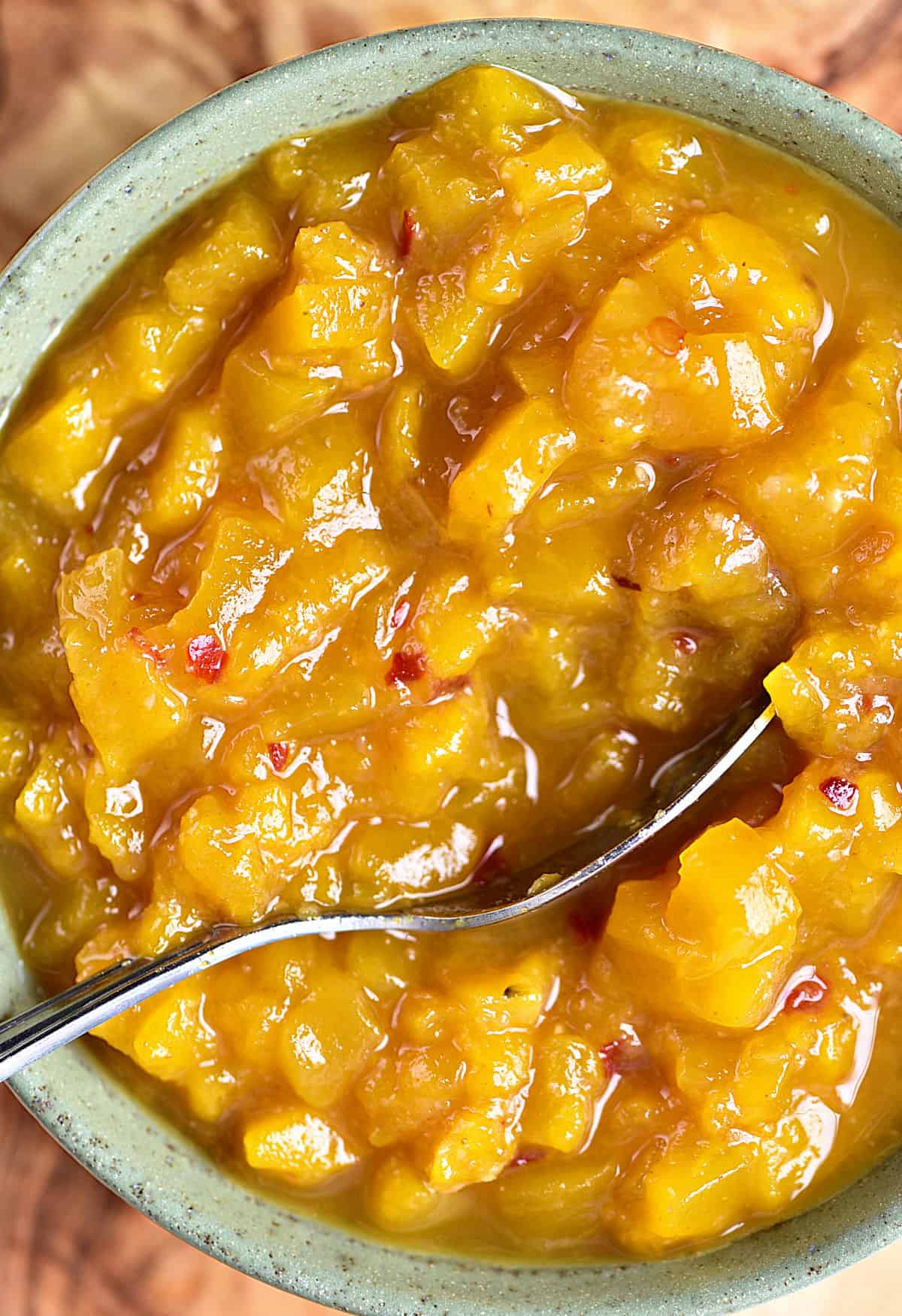
Spicy sweet, tangy and easy to make!
I'm a fan of homemade condiments and sauces. And stone fruit.
Some might say I'm also a huge fan of chutney. Whenever I make this recipe, it doesn't last long, so there's truth in that.
This recipe is even easier than our beloved peach chutney or red chili jam because it has fewer ingredients to peel and chop, but it's still as good!
What to eat with chutney
- Grilled or roasted meats: pork, chicken, turkey, and lamb.
- Cheese: serve it with warm brie or goat cheese on toast, in a cheese quesadilla, on grilled cheese, or as part of a cheese board with crackers.
- Sandwiches and wraps: use chutney as a spread to add flavor.
- Charcuterie board: include mango chutney in a bowl as one of the condiments, along with cured meats like prosciutto, salami, ham or other deli meats of your choice.
FAQ
It's sweet and spicy with a vinegar flavor. It has a resemblance to sweet pickles but with deeper flavors that are very unique to each combination of fruit and spices.
It's a great condiment for pork, chicken, and some cheeses, like brie. It's also great on a charcuterie board, on sandwiches, and with some salads. A vegetarian friend eats it with tofu.
Technically, you can. But if you let the flavors mellow and meld for a few days, it will be tastier. I also like to eat it at room temperature; I find that the flavor is better appreciated than when eating it straight from the refrigerator.
Yes, it does. Similar to homemade jam, the juices and syrup that form with the sugar will thicken as they cool, so you remove them from the oven while they're still pretty fluid.
Spices
There is no chutney without spices. They are a huge part of the success of the recipe.
But the truth is that we have to adapt it to our palate. If there's a spice that you don't like, go ahead and omit it. You might even find a way to make this recipe taste better.
That said, I personally find that ginger, cumin, coriander and red chili flakes are quite essential. They all add a distinct quality that makes this mango chutney a stellar recipe.
How to choose mangoes
Mangoes are typically in season during the spring and summer months.
If unripe, you can let mangoes ripen at room temperature, and once ripe, they can be stored in the refrigerator to maintain freshness.
- Color: the most common mango variety typically has a mix of red, yellow, or orange hues.
- Firmness: gently squeeze the mango; it should yield slightly under pressure.
- Smell: it should have a sweet, fruity aroma near the stem.
- Texture: the skin should be mostly smooth without dark spots or blemishes.
How to cut mangoes
Mangoes are oblong with a pointy end and a large core or seed that makes up about half of the fruit. You can peel it first or not. I don't as the juice makes it messier.
- Wash and dry the mango first.
- Position the mango vertically with the stem end facing up and the pointy end facing opposite you.
- With a sharp kitchen knife, cut along one side. You will have to try until you can make a clean cut that goes all the way down. Cut both sides or cheeks.
- Then, cut the remaining sides, avoiding the core, and slicing as close to the seed as possible. Peel the skin off the slices and cut into smaller pieces if desired.
- To remove the flesh from the large pieces or cheeks, place them on the cutting board with the flesh facing up. Use a knife to score the mango flesh in a grid pattern, making vertical and horizontal cuts without piercing through the skin. Invert the mango cheek by pressing from the skin side, pushing the scored pieces outward to create a hedgehog-like appearance. Use a spoon or knife to scoop out the mango cubes. Here is a video with step-by-step instructions on how to cut a mango.
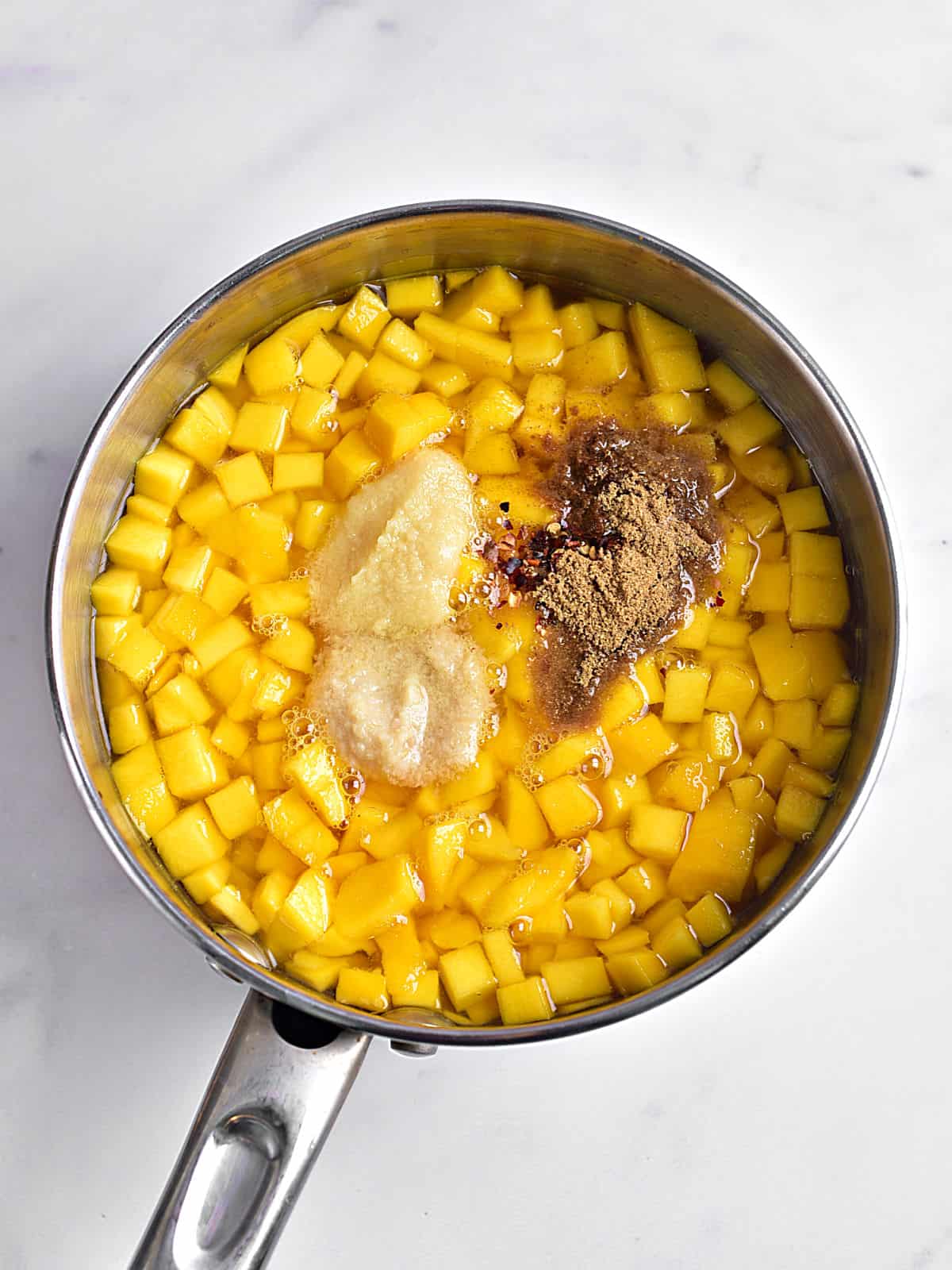
⭐️ Vintage Kitchen Tip
Make sure the pieces of fruit are small so they don't have to be cut when eating it. And remember chutney thickens a lot as it cools down, similar to jam, so remove it while it's still fluid.
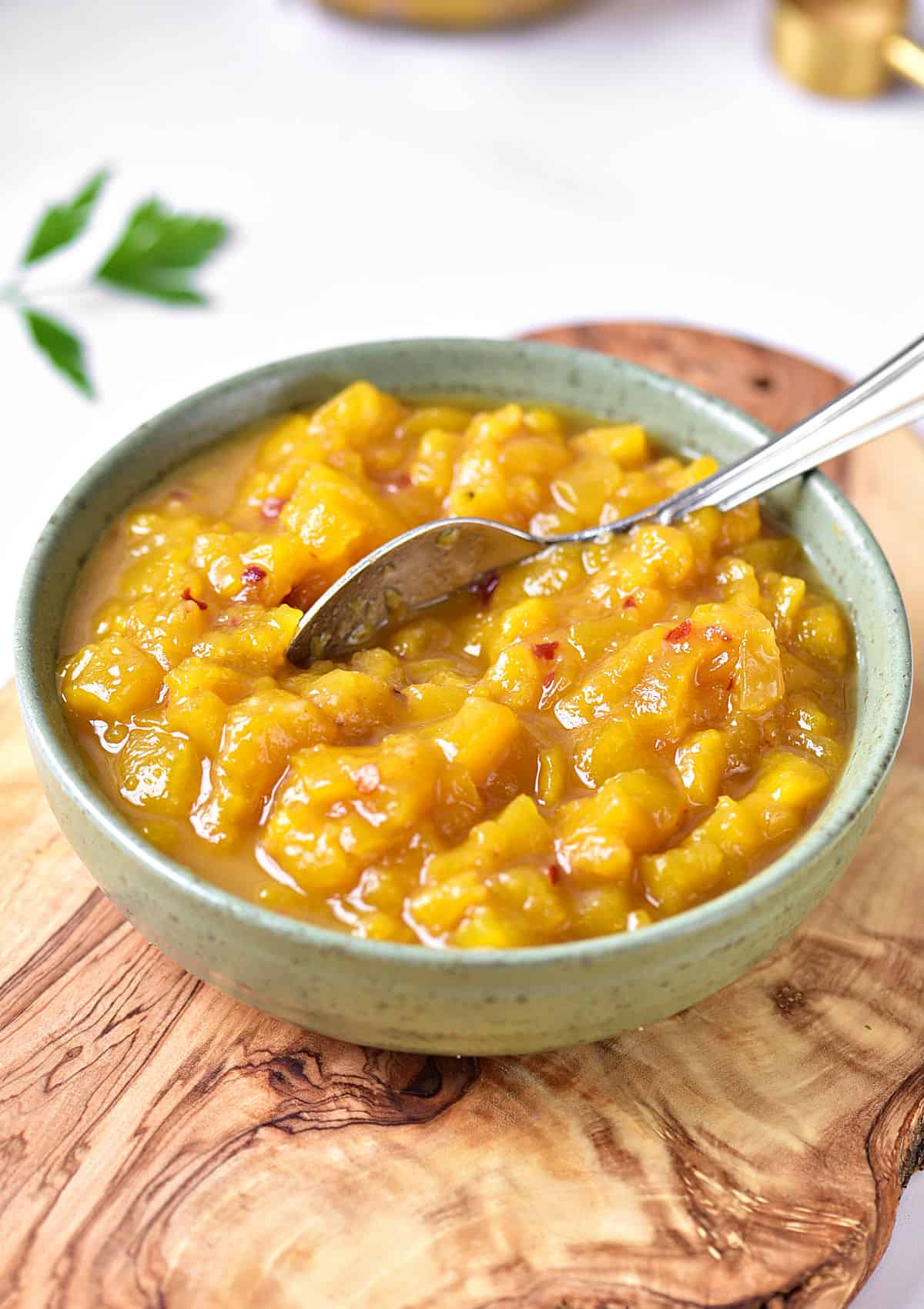
Storing chutney
Refrigeration
Truth is, I eat it in a few weeks, so I keep it in the fridge in a jar. For longer storage, you can use sterilized jars and can it as explained below.
Canning
- Sterilizing jars in the oven: I wash glass jars and put them in the oven for about 15 minutes at a medium temperature, around 325°F/160°C.
Lids: I boil them while the jars are in the oven. - Take the jars out and pour in the hot chutney. Put on the lids while still hot but don't tighten them at this point. Half-screw them until the chutney has cooled down. My mother also covers the top with a piece of wax paper before adjusting the lids. I don't do it normally, but my grandmother used to do that so she also does. She says it helps to keep it longer.
- Keep in the refrigerator.
Freezing chutney
- Let it cool down and fill freezer-safe containers. It keeps for a few months. Defrost in the fridge or at room temperature. The texture might not be exactly the same, but some people don't want to go through the task of canning so freezing is a great alternative.
Related recipes you might like:
If you made this recipe and loved it, you can comment below and leave a 5-star ⭐️ review. Also, if you had issues, let me know so we can troubleshoot together.
You can also subscribe to our FREE email series 'Baking the Best' and our regular newsletter. Or follow and save my recipes on Pinterest.
As an Amazon Associate, I earn from qualifying purchases. Read my disclosure policy.
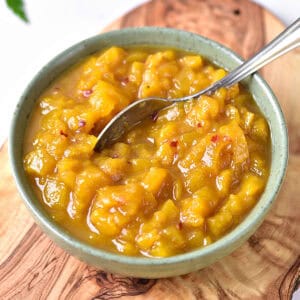
Easy Mango Chutney Recipe
Ingredients
- 3 medium ripe, fresh mangoes
- 1 tablespoon vegetable oil
- 2 teaspoons minced garlic
- 2 teaspoons minced ginger
- ¼ teaspoon red pepper flakes, or chili flakes
- ½ teaspoon cumin seeds
- ½ teaspoon coriander seeds
- ⅛ teaspoon cardamom seeds
- ⅛ teaspoon ground cinnamon
- ¼ teaspoon salt
- ¾ cup sugar, white, brown or a mix
- ½ cup white vinegar
Instructions
- Cut the mango into small cubes.
- Heat oil in a medium skillet and add garlic and ginger. Stir a minute and add the red pepper flakes and seeds (cumin, coriander and cardamon). Stir for another minute, until fragrant but not browning.
- Remove from the heat and add cinnamon and salt. Reserve.
- Bring sugar and white vinegar to a simmer in a medium saucepan or pot, stirring until completely dissolved.
- Add the mango and spice mixture. Stir and cook for 45-50 minutes on low heat until the mango is soft. If you want a smoother mixture, it might take longer to reach your desired consistency. Don't let the liquid evaporate completely. Add a tablespoon of water if needed.
- Transfer the mango chutney to a shallow dish and let cool. Put it into jars and refrigerate them for a few weeks, or serve immediately.
- For longer storage, preserve mango chutney by canning it in sterile jars, closing them with sterile lids, and storing them in the refrigerator.
Notes
Which vinegar is best for a chutney? In theory, any vinegar can be used, but let's just say balsamic is not a good idea, so I'd stay away from that one. Other ones also work, like red or white wine vinegar, malt, and champagne vinegar (it's lighter in taste). Small batch recipe: You can easily make half the recipe. It will take less time to thicken, about 20 minutes, so finely chop everything to make sure it softens as it should. Canning: I'm not an expert, so I will leave a link for preparing jars for canning, and this link that explains how to store chutneys. Onion: you can add ¼ cup chopped yellow onion together with the garlic and ginger.


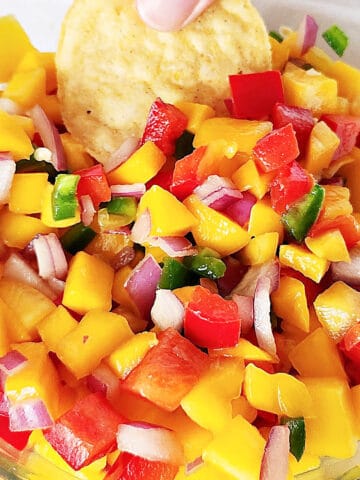
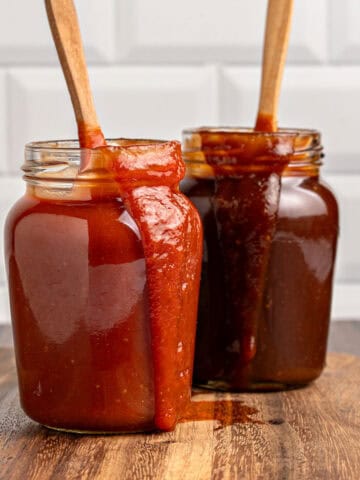
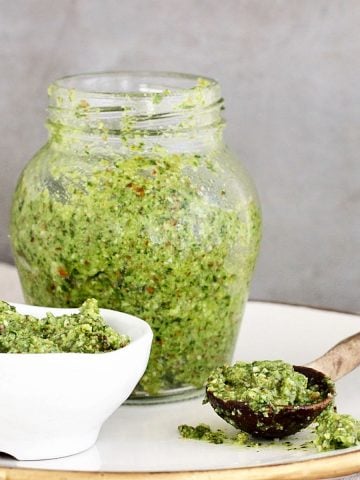
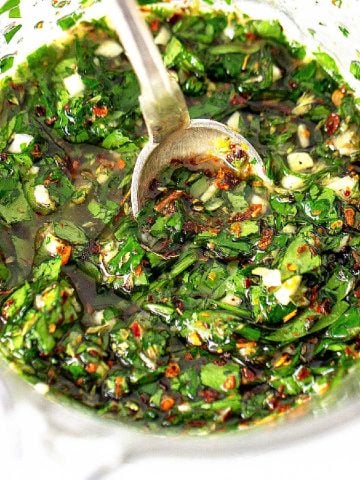
Darlene says
I made this recipe for a bacon wrapped chicken appetizer. I used apple cider vinegar and white sugar. I used a mortar and pestle to grind up spices a bit. Plus removed the cardamom seeds when done. I also used frozen mango. I cut back on the pepper flakes, it was for a larger gathering and wasn't sure on people's preferences. Nothing left, everyone enjoyed it. I have added to my recipe collection. Thank you for sharing.
Paula Montenegro says
Thanks for the feedback Darlene!